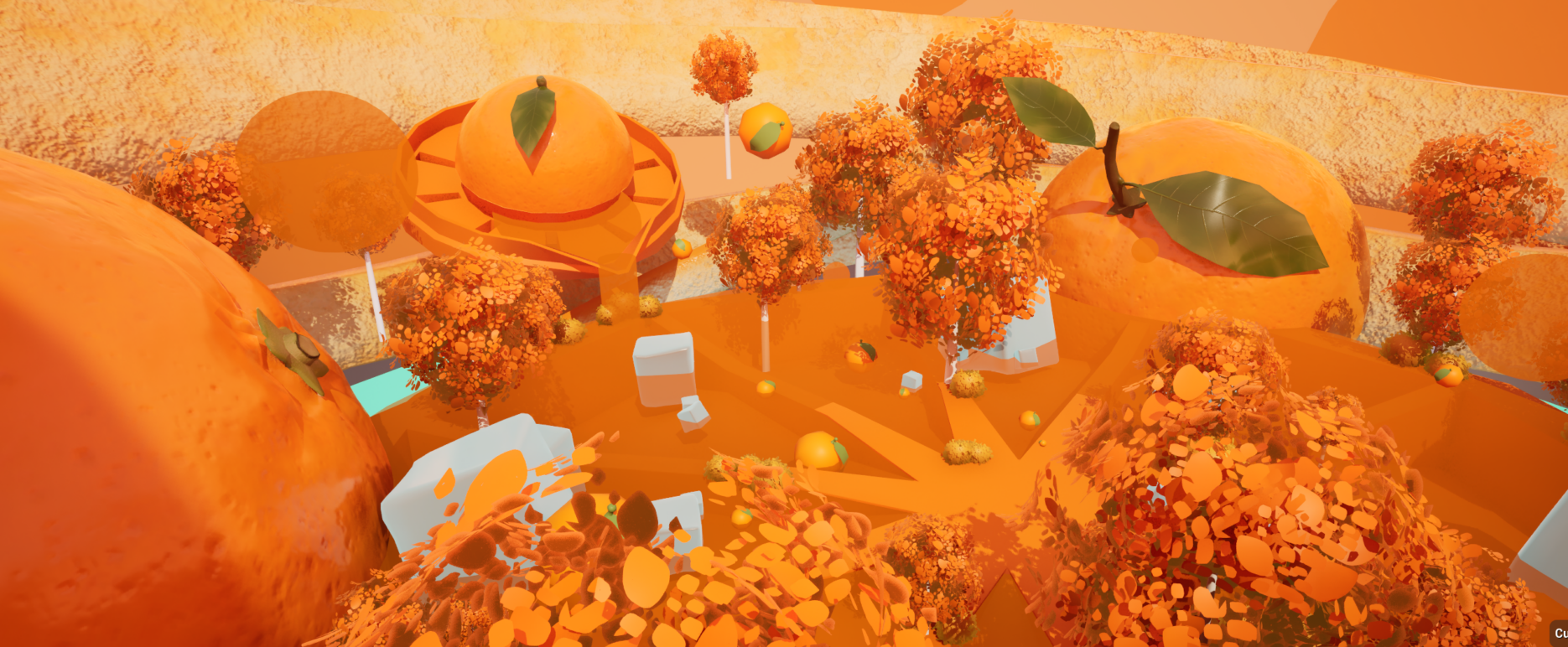This week, we prepared for the playtest on Saturday. Despite many areas needing adjustments, we prioritized the most critical elements to ensure the audience’s understanding in the limited time.
Although the kitchen scene was visually complete, there were minor issues we had grown accustomed to but needed to fix, as pointed out by our instructor. For example, cultural differences led us to misinterpret a trash can as a diaper bucket, and some models were too close to the wall, causing visual inconsistencies. Fixing these details made the scene feel more realistic. Lucy also resolved last week’s lighting issue by separating the room model, allowing for better light penetration.
Lighting plays a crucial role in conveying emotion. Initially, we used directional lighting to create shadow patterns on the floor through a window grille, but once we added the character model, we noticed that the background outside the window appeared too cluttered. Using references from similar film stills, William added volumetric fog outside the window to soften the view and reduce distractions from the plants and exterior. We also increased bloom and exposure to optimize the scene for cavern projection.
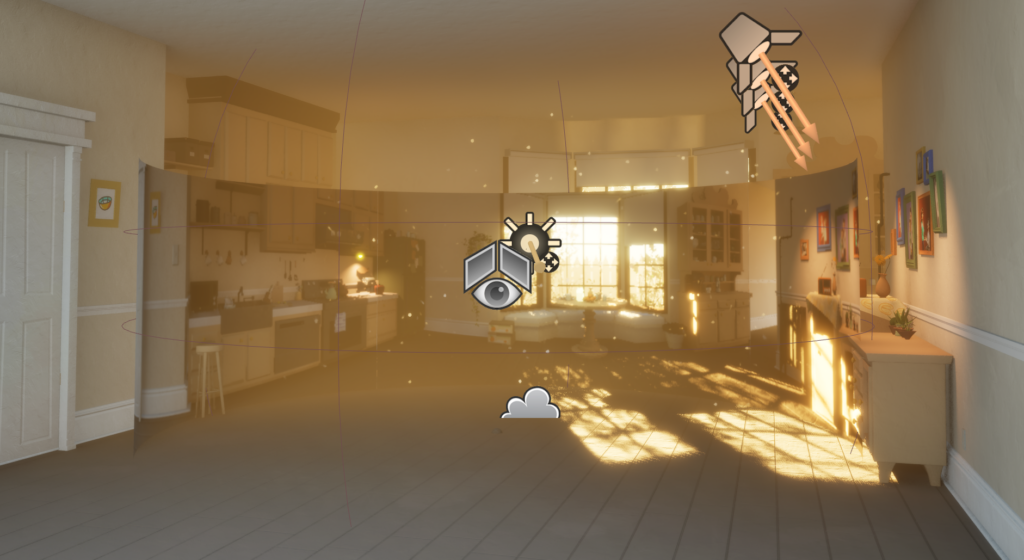
For the second scene, placeholder directional light that casts harsh shadows needs to be softened or removed. We adjusted the softness of the directional light and added a skylight for shadow fill. To better reflect the dreamlike “galaxy” feel, we use directional lighting from the bottom up for a rim-lit effect on the models. Adding height fog and volumetric fog helped prevent the scene from looking too suspended. Increased bloom added a glowing halo to emissive materials like the jam slide and clouds, creating a more cohesive, surreal atmosphere.
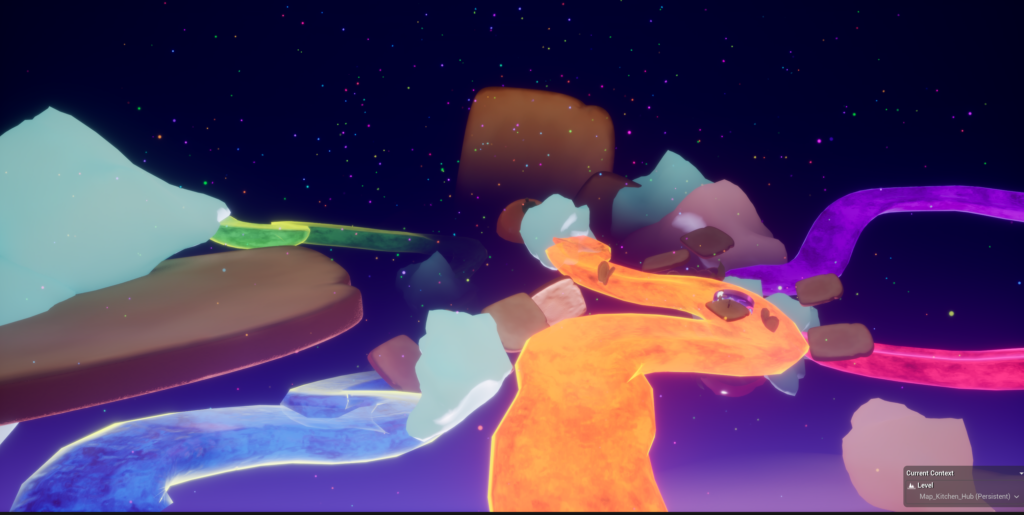
Upon receiving last week’s mocap data, William cleaned and debugged it, and Sarah integrated it into the level sequence. Sarah had previously bound the character to a slice of toast to achieve the effect of dancing in the air. Since the dance sequence wasn’t finalized, it was relatively rough. Now, with the refined mocap animation, Sarah adjusts the movement of the toast flying in the air according to the general route previously determined. The two characters sometimes stepped on different slices of toast and reunited, sometimes the toasts turned over like in the universe, making them head down, and some bread around them flew with them. These animation details greatly enriched our picture and further improved the completion of this scene.
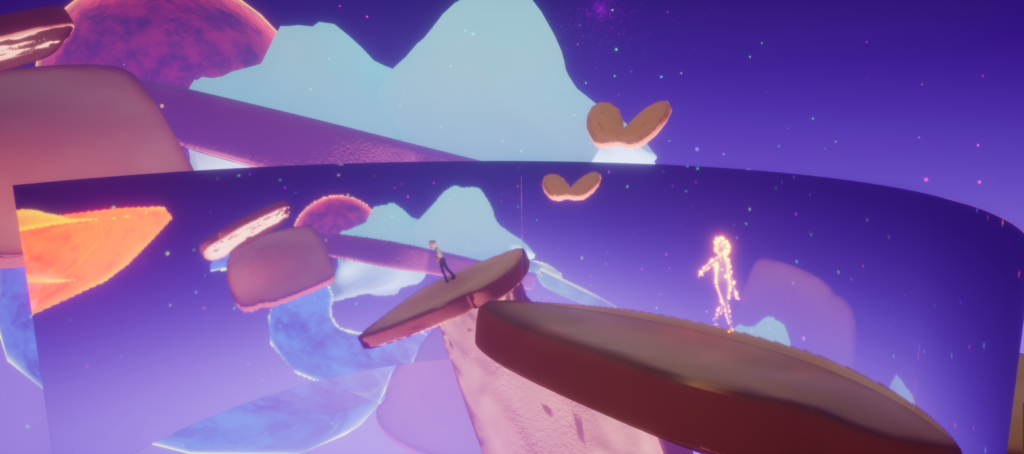
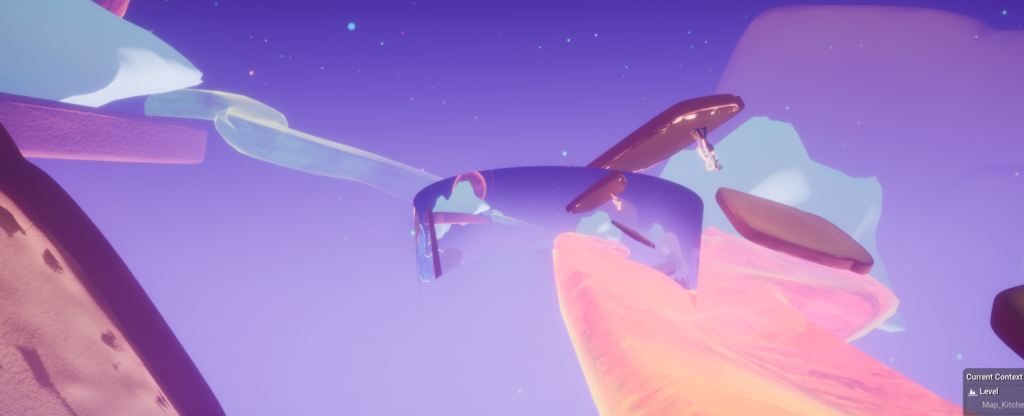
Regarding the orange juice forest, Lucy developed detailed materials for the orange skin, pulp, and peel, replacing the solid colors. She also created a new orange peel model surrounding our main environment to fill in the empty areas around. Additionally, she integrated stylized tree models with custom shaders to transform the scene into a true “orange juice forest.”
While watching the animation in this scene, William added playful movements to the oranges, animated the half orange on the juicer to rotate in rhythm with the music, and made some oranges in the lake float up and down. Although we didn’t have time to complete everything before the playtest, we wanted the audience to understand the style we aimed to achieve.
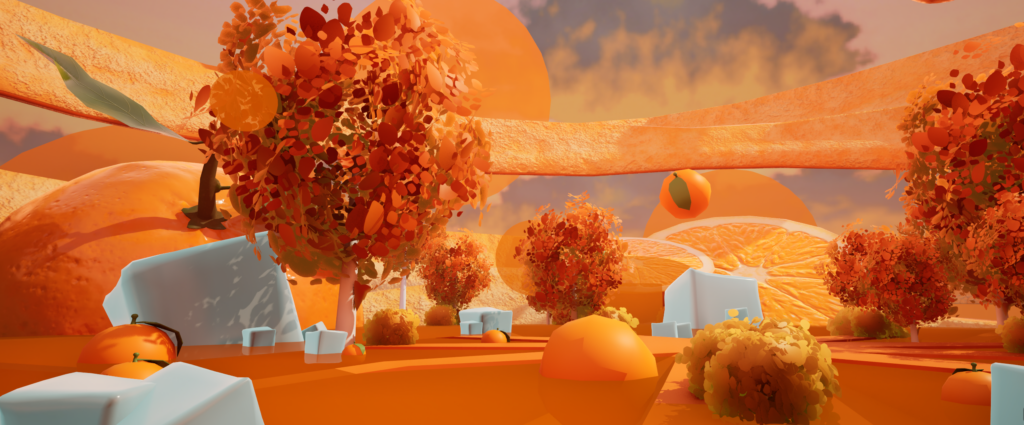
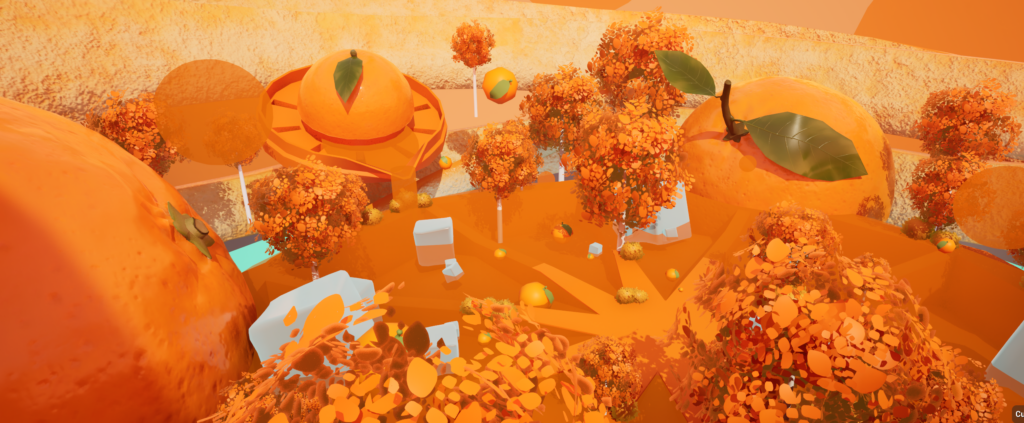
We dedicated some time to preparing for the playtest, and attending a workshop to gain insights on “how to get the feedback you want” and “what questions to avoid.” Since we’ll be conducting the playtest in the cavern room with a standing audience, using traditional questionnaires would be inconvenient. Instead, we decided to gather feedback through interviews and note-taking. With everything ready, we plan to showcase the latest rendered version during the playtest on Saturday, hoping the audience’s input will spark new inspiration for our work.
